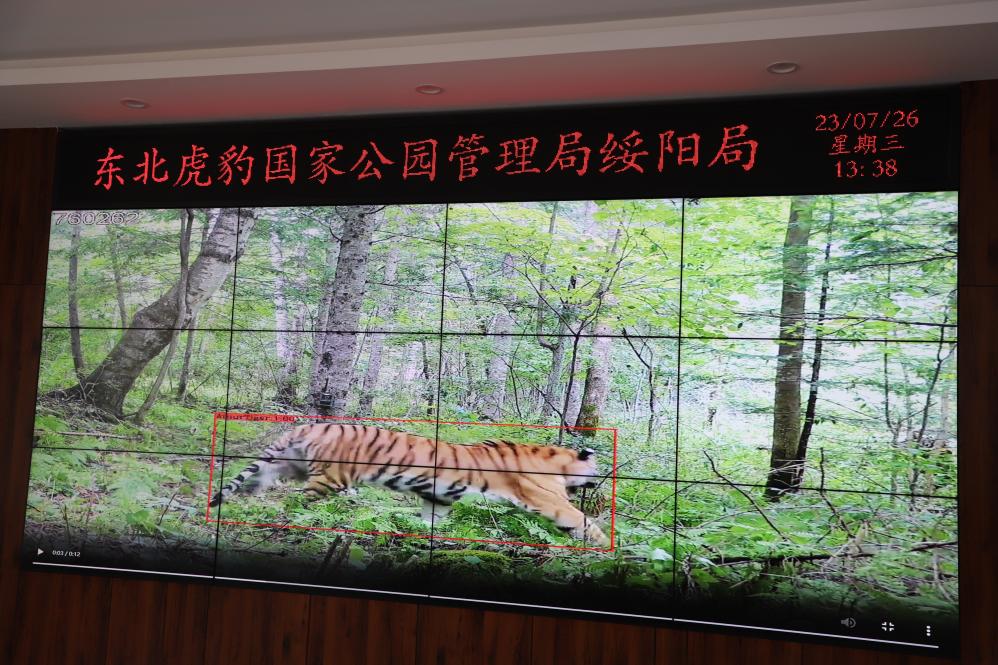Xinhua News Agency, Harbin, March 21st Title: The expansion of Northeast Tiger’s activity scope reflects the ecological change of forest area.
Xinhua News Agency reporter Xiong Yanhao and Wang Junbao
Information from several grass-roots forestry units in Heilongjiang Province shows that since the commercial logging of natural forests was completely stopped in key state-owned forest areas in Heilongjiang Province in 2014, the activities of Northeast Tiger in this area have gradually expanded.
In January this year, the wild Siberian tiger was found again in the application area of Muling Forestry Bureau Co., Ltd. of Longjiang Forest Industry Group. Wang Daohui, the ranger of Heping Forest Farm of Muling Forestry Bureau Co., Ltd., and his colleagues also found the feces of the Northeast Tiger and the moving images of the tiger taken by infrared cameras.
"This is the fifth adult wild Siberian tiger discovered in Muling forest area in recent years." Guo Jianjun, head of Liufengshan National Forest Park Management Office of Muling Forestry Bureau Co., Ltd. said.

Rangers collect wild Amur tiger feces (photo taken on December 28, 2023). Xinhua News Agency (photo by Yang Chen)
In 2014, the commercial harvesting of natural forests in key state-owned forest areas in Heilongjiang Province, which lasted for more than half a century, stopped, and tens of thousands of forestry workers, including large and small Xing ‘an Mountains, changed from tree cutters to tree planters and foresters, and the northernmost forest barrier in China regained its vitality.
In October 2014, the footprint of a wild Siberian tiger was found in founder county, Harbin. It was the first time that people found the footprint of a wild Siberian tiger in founder county since the 1970s. A month later, the trail of wild Siberian tiger was first discovered in the application area of Weihe Forestry Bureau Co., Ltd. of Longjiang Forest Industry Group. In 2016, the number of monitoring images of wild Siberian tigers in some application areas of Longjiang Forest Industry Group reached the highest value …
After 2016, wild Northeast Tiger and Leopard were also discovered in Yichun forest area of Xiaoxing ‘anling, and even the Northeast Tiger family was photographed in Suiyang forest area; In 2021, the Siberian tiger was discovered again in Daxinganling area of Heilongjiang Province. Previously, the wild Siberian tiger was once thought to be extinct in Daxinganling.

On July 26, 2023, the picture of the wild Siberian tiger monitored by Suiyang Bureau of the Northeast Tiger and Leopard National Park Administration. Xinhua News Agency reporter Dai Jinyu photo
The northeast mountain forest in China was once one of the main habitats of the wild Amur tiger. However, in the past, many human disturbance and destruction caused the habitat of the wild Siberian tiger to shrink and the species to be endangered.
Zhang Peng, a professor at the Forestry College of Northeast Forestry University, said that in recent years, with the continuous implementation of measures such as stopping logging and patrolling, the forest resources in the northeast forest region of China have been restored, the ecological environment has been improving, and animals such as black bears, wild boars, roe deer and wild deer have increased day by day, providing a living environment for large carnivorous wild animals.
Yang Chongjun, deputy director of the Resource Management Department of Longjiang Forest Industry Group, said that in recent years, the scope of activities of the Northeast Tiger in the application area of Longjiang Forest Industry Group has expanded from 9 forestry bureaus to 14.
Zhang Minghai, a professor at Northeast Forestry University and director of National Forestry and Grassland Administration Feline Research Center, said that tigers are large carnivores, which are at the top of the food chain and require extremely high habitat conditions. Northeast tigers are willing to settle in the relevant forest areas, which shows that they can be provided with a lot of food there, and indirectly shows that this forest area is rich in biodiversity and the ecological environment has been effectively restored.
According to the data of Forestry and Grass Bureau of Heilongjiang Province, the forest area in Heilongjiang Province is 20.12 million hectares at present, and there are about 500 species of terrestrial wild animals distributed in the province. In recent years, the local wildlife shelter and rescue mechanism has been continuously improved, and a wildlife rescue system covering the whole province has been established. (Participating in writing: Zhang Wei You Wu)